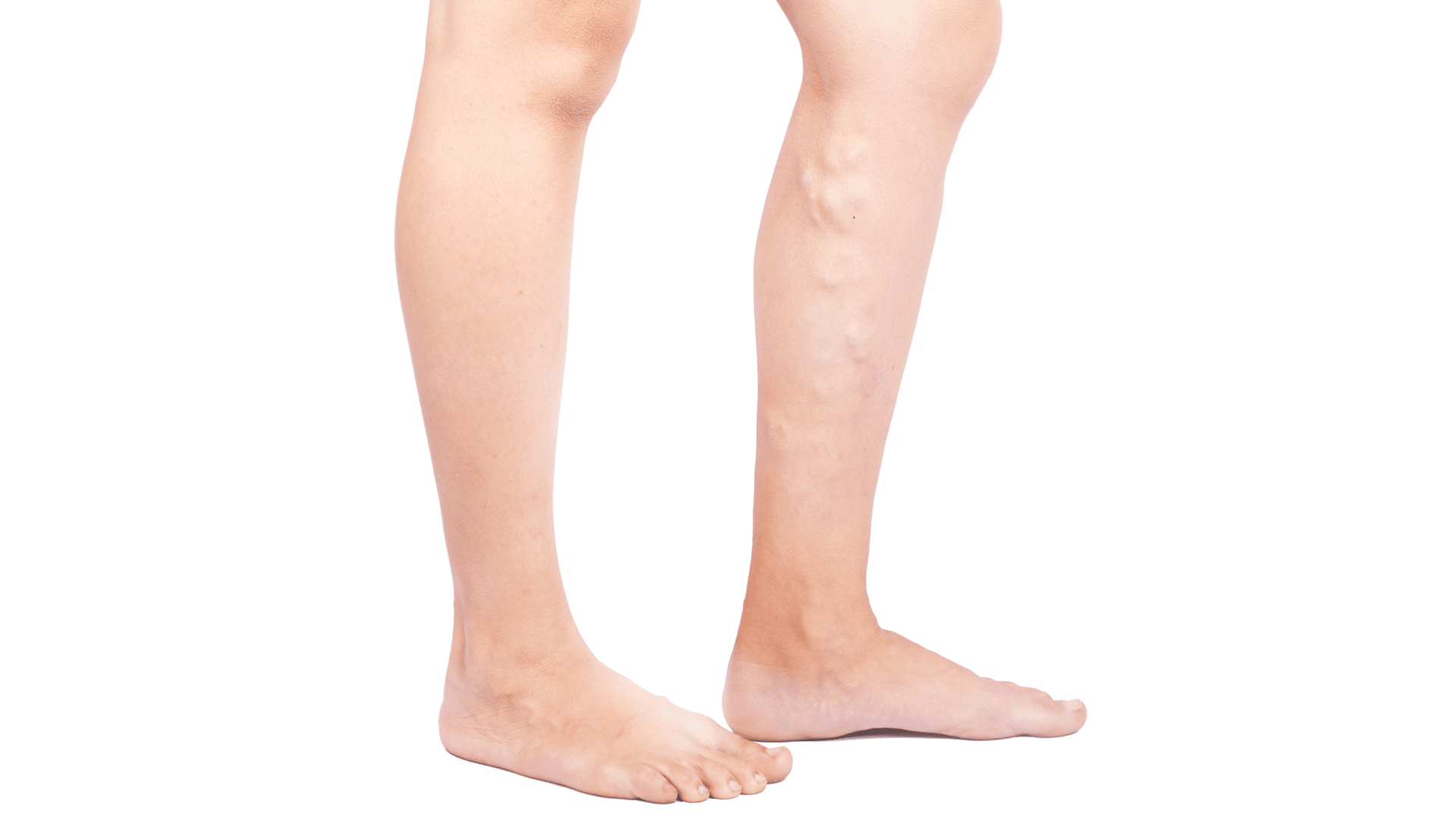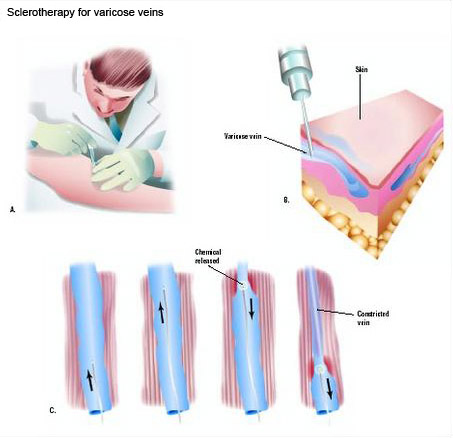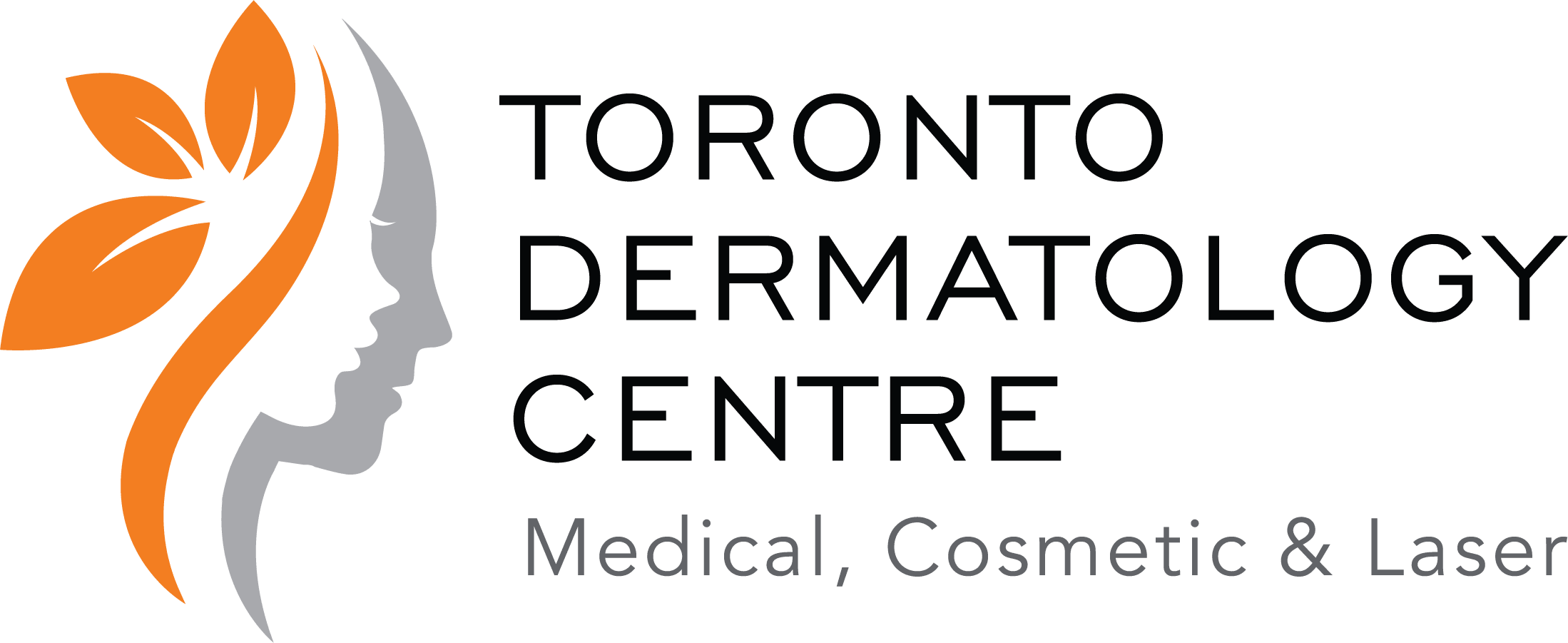Toronto Dermatology Centre is pleased to provide you a consultation to discuss the treatment of leg veins. There are various types of leg veins of various sizes, and unfortunately both men and women of all ages can get them. Thankfully we have terrific treatment and prevention options for you at our Toronto skin care clinic.
Many men and women develop visible or prominent leg veins. They may be purplish or red thin spider veins, larger blue reticular veins or bulging varicose veins.

Several factors may play a role in the development of leg veins.
A genetic predisposition to the development of veins plays a role, as do the changes in hormones at puberty or pregnancy and the use of the birth control pill.
Sitting or standing for too long during the day appears to worse leg veins as well. Occasionally, veins may cause an aching sensation or pain.
Exercise, normal weight maintenance and support hose can help to minimize leg veins. The Toronto Dermatology Centre provides laser (Excel-V/long pulse Nd:YAG and sclerotherapy methods of spider and vein treatment. Varicose vein treatment usually involves a surgical or deep laser (e.g. EVLT) procedure.
What is sclerotherapy?
Sclerotherapy is a method of spider vein removal that involves injecting a solution into the vein with a very fine needle. The solution irritates the lining of the vein, the walls stick together and blood cannot enter the vein.
Blood is re-routed to the healthy venous system and the vein is then absorbed by the body over time.
Many veins are injected during a spider vein treatment session but usually many sessions are required, depending on the size and number of veins. Most patients have a 50-90% improvement. Note that we cannot stop the aging process, so more veins can develop with time and retreatment years later is often required.

What are the side effects?
- Patients may experience pain or a burning sensation during the injection.
- Bruising may occur and can last for 10 days.
- Veins may become darker and then fade in a few weeks.
- Veins may be tender for 7-14 days.
- Itching or a small red bump may develop at the site of injection and may last 2-3 days.
- Temporary brown pigmentation may occur and can take weeks to a year to fade.
- A small ulceration may occur and heal with a scar.
- Tiny, new blood vessels may form after injections, but these are usually temporary.
- Rarely, patients may develop phlebitis, an infection or an allergic reaction.
What does the patient do before treatment?
- Avoid anti-inflammatory medication (e.g. aspirin, ibuprofen) for 1 week before treatment – this reduces risk of bruising.
- Do not shave legs for 2 days prior to treatment – this reduces risk of infection.
- Bring support hose to the office to wear home.
- Wear pants or dark hose to hide band-aids or cotton balls that may be taped on for a few hours.
What does the patient do after treatment?
- Walk for about 20 minutes.
- Maintain normal, light activity; strenuous activity may be resumed after 2 days.
- Avoid hot baths or saunas for 2 weeks after treatment.
- Wear support hose for at least 2 weeks after treatment – this is ideal for best results, but not critical.
Here is a selection of media articles quoting our renowned dermatologists Dr. Benjamin Barankin and Dr. Anatoli Freiman as they pertain to spider leg veins. Toronto Dermatology Centre is proud to be among the largest treatment centres for spider leg veins in Canada.
To read more about Laser Hair Removal – Click Here
To read more about Peels – Click Here
To read more about Microdermabrasion – Click Here
To read more about Photorejuvenation – Click Here
Toronto Dermatology Centre is located in Toronto, Ontario, and serves men and women in North York, Vaughan, Richmond Hill, York, Aurora, Thornhill, Mississauga, Etobicoke, Scarborough, Pickering, Peterborough, Guelph, Kitchener, Waterloo, Hamilton, Oshawa, Barrie, downtown, midtown, uptown and all of Greater Toronto (GTA).
Thinking of visiting Toronto’s premier skin clinic soon?
Fill out the inquiry form below and let us know your area of interest.
Call us today @ 416.633.0001
